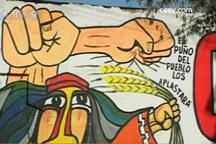洪都拉斯考古學家聲稱發現了中美洲前哥倫比亞瑪雅文明時期一個國王的遺體,同時,秘魯考古學家在Machu Picchu發現了一具木乃伊,以及隨葬的大量珍貴的陶器。
Honduran archeologists believe they have found the remains of a king of Central America's pre-Colombian Mayan civilization. Meanwhile, Peruvian archaeologists have uncovered a mummy in Machu Picchu, buried with a number of valuable pieces of pottery.
The skeleton thought to belong to the king was discovered in the Temple Oropendola, in the Mayan ceremonial center of Acropolis in Copan, western Honduras.
The remains correspond to those of a man over the age of 30 measuring between 1.54 and 1.67 meters tall. The Temple of Oropendola dates back to between 550 and 700 A.D.
Archeologists have concluded the remains belong to one of the first kings from the Copan dynasty.
A teenage mummy, along with a valuable collection of Incan pottery, was discovered in a tomb in Machu Picchu recently, Peru's National Institute of Culture announced on Tuesday.
The discovery was made by archaeologists when they were doing restoration work on a drainage system.
Scientists said the mummy could be from a person aged between 14 and 16 years. Although some of the bones had disintegrated, others were still intact. The teeth showed signs of moderate dental attrition, indicating the individual included grain as part of his diet.
The pieces of pottery were found in the tomb of the individual, buried some 40 centimeters underground. They included an undecorated domestic pot, a red drinking glass, a pot with a picture of a snake on it, a broken plate and a fragment of a copper needle.
The body was exhumed and taken to an anthropological lab for further analysis.
詞匯提示:
1.remains n.殘余, 遺跡, 遺體
2.correspond to 相應, 符合
3.mummy n. 木乃伊, 干癟的人
4.drainage system 排水系統
5.disintegrate vt.(使)分解, (使)碎裂
6.attrition n.磨擦, 磨損
7.fragment n.碎片, 斷片, 片段












